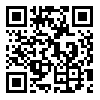مجله جهانی جراحی پلاستیک
مجله جهانی جراحی پلاستیک
شنبه 1 اردیبهشت 1403
[Archive]
دوره 9، شماره 2 - ( 1399 )
جلد 9 شماره 2 صفحات 145-141 |
برگشت به فهرست نسخه ها
Download citation:
BibTeX | RIS | EndNote | Medlars | ProCite | Reference Manager | RefWorks
Send citation to:



BibTeX | RIS | EndNote | Medlars | ProCite | Reference Manager | RefWorks
Send citation to:
Jahandideh H, Dehghani Firouzabadi F, Dehghani Firouzabadi M, JFM Lohuis P, Roomiani M. The Persian Version of Utrecht Questionnaire for Evaluation of Aesthetic Rhinoplasty Outcomes: Translation and Validation. WJPS 2020; 9 (2) :141-145
URL: http://wjps.ir/article-1-602-fa.html
URL: http://wjps.ir/article-1-602-fa.html
The Persian Version of Utrecht Questionnaire for Evaluation of Aesthetic Rhinoplasty Outcomes: Translation and Validation. مجله جهانی جراحی پلاستیک. 1399; 9 (2) :141-145
چکیده: (3296 مشاهده)
BACKGROUND
There are different questionnaires and approaches to evaluate the outcome of rhinoplasty operations. A short questionnaire, which can be completed in less than 2 minutes, is the Utrecht questionnaire that consists of a visual analogue scale (VAS) and five multiple-choice questions. In this study, we have translated the questionnaire in Persian and evaluated its reliability and validity.
METHODS
METHODS
Patients undergoing aesthetic rhinoplasty surgery in Firoozgar Hospital from January to March 2019 were enrolled. The questionnaire was translated to Persian and backward translated to English by independent medical extern Persian speakers with complete English proficiency. The internal consistency was measured by Cronbach’s alpha, repeatability by Student t test of test-retest 4 weeks and 12 weeks follow-up post-operatively, and validity by comparing pre- and post- operative results.
RESULTS
Thirty patients were included in the analysis. The Cronbach’s alpha was 0.925 as a marker for internal consistency. The test-retest was acceptable for all the questions accordingly (P>0.05). The p values for pre- vs. post-operative tests were also significant for either all of the questions and the sum score.
CONCLUSION
The translated questionnaire was internally consistent and repeatable. The questionnaire also seems to be valid for all questions and the sum score. According to our analysis, the translated Persian version of the Utrecht questionnaire seems to be internally consistence, reliable in test-retest analysis, and valid due to a pre-post operational analysis
| بازنشر اطلاعات | |
 |
این مقاله تحت شرایط Creative Commons Attribution-NonCommercial 4.0 International License قابل بازنشر است. |


